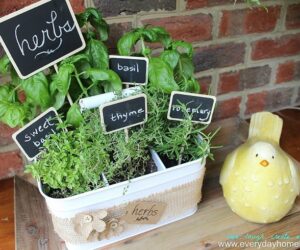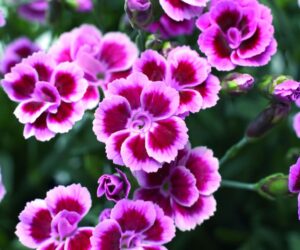It is very easy and inexpensive to grow pumpkins. They belong to the gourd family, same as squashes, marrows, and courgettes. Plants normally grow pretty big with trailing vines along which the fruit grows. Although your pumpkins won’t turn into a carriage, they still have many other benefits.
They have great nutritional value.
They are delicious in soup, pie, cake, risotto, etc. You can also dry roast some of the pumpkin seeds. They are really healthy and tasty. The most common pumpkin association is Halloween.
Read on to learn more about how to grow this delicious vegetable in your own garden and make Halloween pumpkin carvings from your own product next year.
1. Location

Via roguefarms.com
Pumpkins need a good amount of space and to be sheltered from the winds to thrive. Ensure them a protected, warm place where they can grow.
If you don’t have enough space, you can use twine to train the vines into spirals. You should also choose a place which doesn’t have standing water after heavy rain.
2. Planting
For most families, two plants will be enough, but if you want to grow more, plant two or three pumpkin seeds together because sometimes some of them might not sprout. You should put it about one or two inches deep. The distance between individual plants depends on your pumpkin variety, but you should leave around eight feet between them in general.
3. Soil

Via www.youtube.com
Pumpkins like warm, well-drained soil that is rich in humus. It is best if you prepare the soil in advance. Dig a hole and add plenty of compost one week before planting. You should also take care of good drainage. Avoid using clay-based soils because they don’t absorb water quickly enough.
4. Sunlight

Via www.homedeconomics.com
For your pumpkins to stay healthy and produce proper fruits, they need a lot of sunshine. Plant them in a spot that receives at least 6 hours of full sun a day. They can tolerate short periods of hot and dry weather very well. Avoid planting them under a tree or in the shadow.
5. Watering

Via amaraland.com
Pumpkin plants will need a lot of water. Their roots run deep, so you have to give them good watering and let it soak into the soil to ensure the water will actually reach them. You have to be careful, though, not to do it too often. Water them again when the soil dries out instead of watering the soil that is still wet.
6. Fertilizer

If the soil isn’t already composted, it is advisable to cover your seeds with compost. Pumpkins need a lot of nitrogen. They will thrive much better if you also give them general fertilizer. The best time to do that is when they first sprout, about ten days after planting.
7. Taking care

You should keep your pumpkins free from weeds and be careful that they aren’t sitting on wet ground. If that happens, you can prevent them from rotting by raising the fruits off of the ground. It is also advisable to remove all the leaves that are shading the fruits. This will help them ripen.
8. Pests and diseases

Via kentuckypestnews.wordpress.com
There is a white fungus that can form on the leaves called powdery mildew. You can minimize the risk by watering your pumpkins only during the day. Another potential threat is a mosaic virus. Also, lookup for the beetles every few days and scrape them off the plant. If you find aphids on the undersides of the leaves, wash them off with water.
9. Harvesting

Via www.littlehomeblessings.com
Your pumpkins will be ready for harvesting somewhere from 12 to 20 weeks after sowing. When the outer skin gets harder and the stems start to dry out and wither, it is time to pick them. Cut the stalk a few inches above the top of the pumpkin.
10. Storage
After you cut your pumpkins, you should leave them in the sun for a few more days for their skin to harden further before storage. Then find a cool and dry place away from the direct sunlight. This way you can keep them for months. Remove all the spoilage pumpkins from storage shelves as soon as you notice them.





